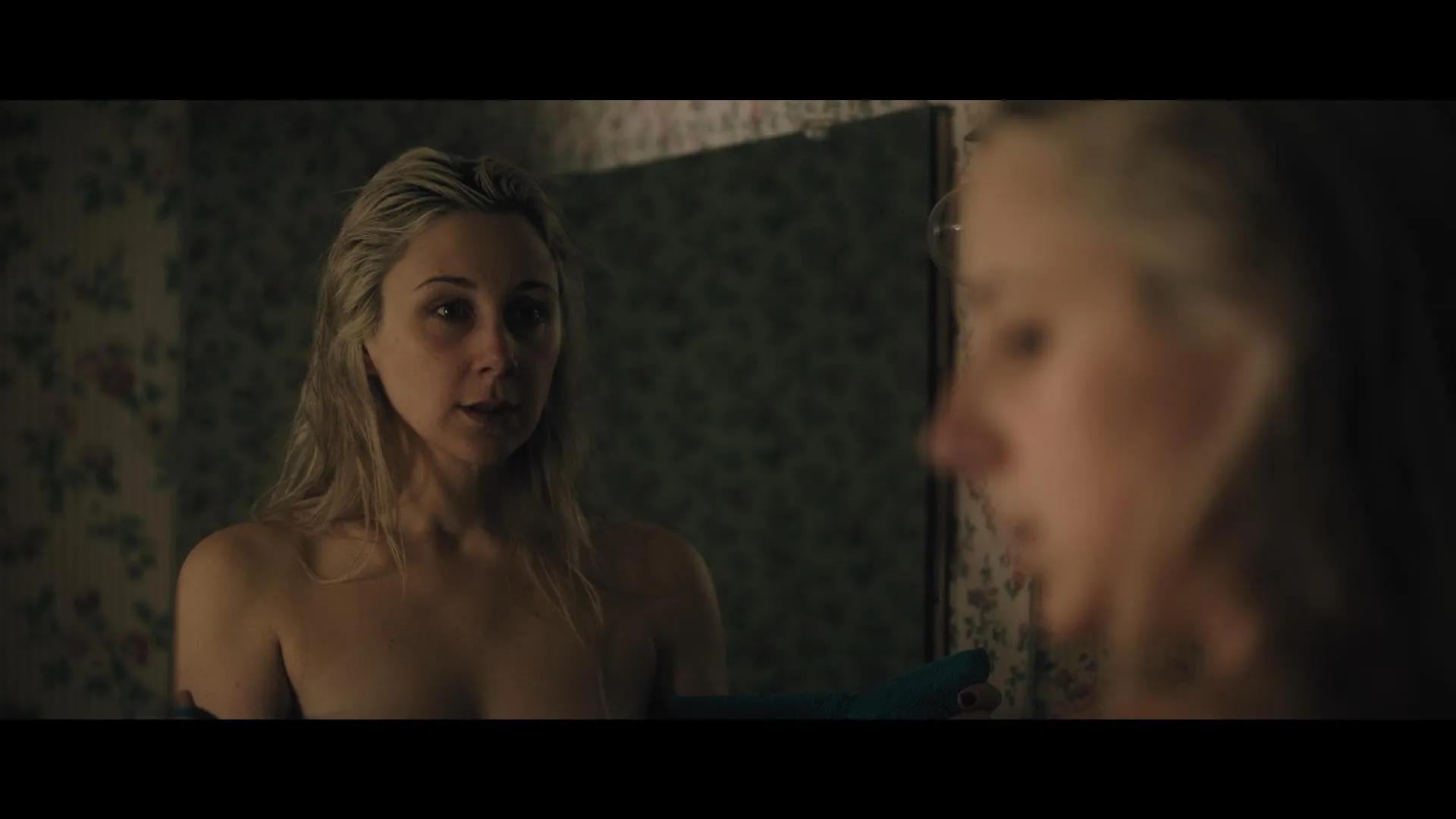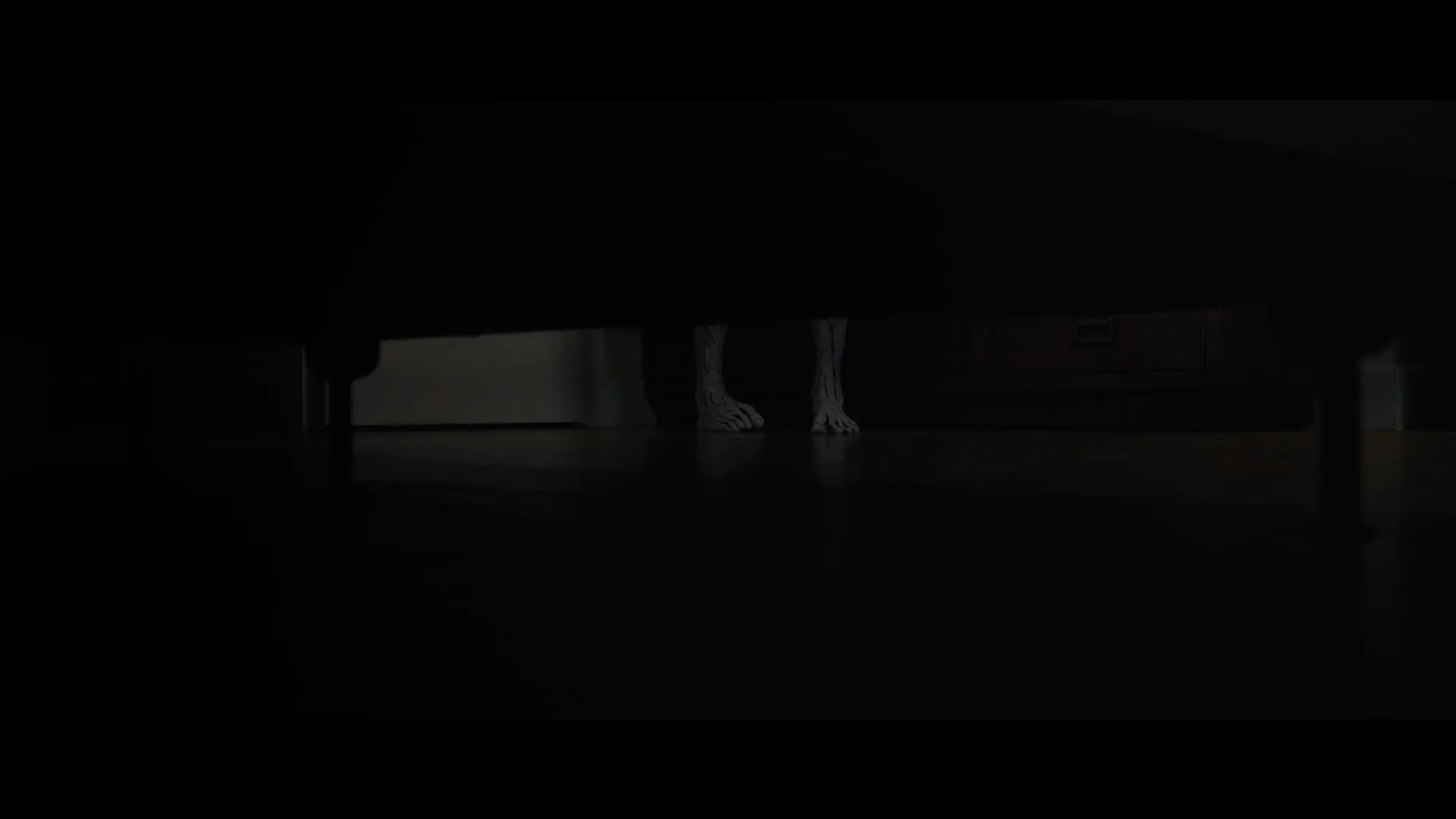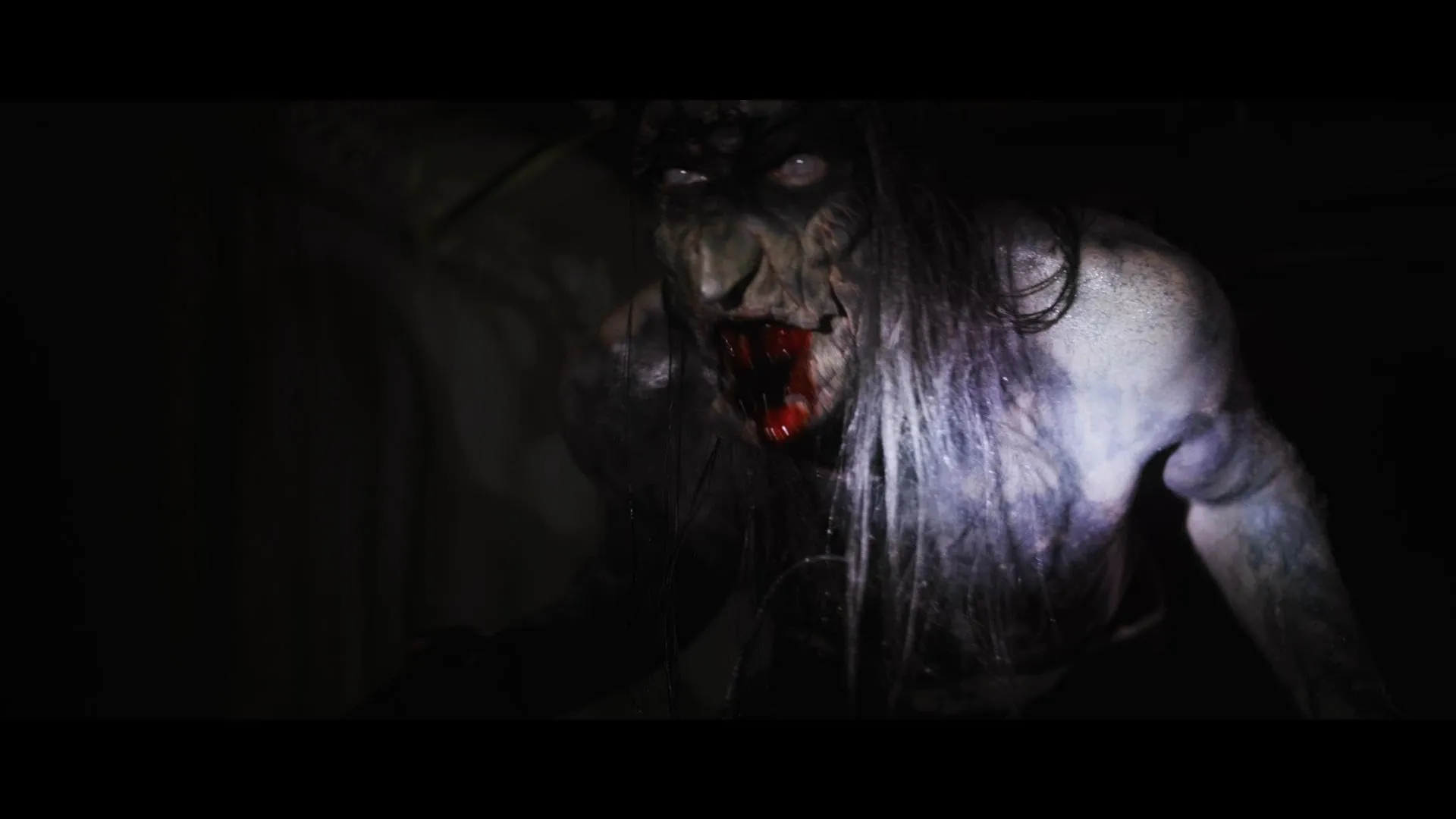The New England house in Beezel serves as more than just a setting; it becomes a character with its evil spirit. This house is wrapped in winter’s chill, and its snow-covered exterior hides a dreadful history. With its squeaky floors and dark corners, the building evokes a creepy nostalgia, like listening to ghost stories by the fire (though maybe with a bit more bloodshed).
It’s impossible to stress how important this house is. This building holds the past, keeps secrets, and is a stage for the grotesque. The basement’s dark corners represent not just the witch Beezel’s actual hiding place, but also the societal fears and hidden traumas that exist below the surface of everyday life. One could say that this setting is a reflection of the secret horrors that exist within families that seem stable. It’s like historical stories where the home, which is usually seen as a safe place, turns out to be scary.
The narrative thrives on this duality. The house gives its residents a false sense of security before snatching them up in its creepy embrace. The whispers of past crimes in each room create an atmosphere of intense tension. The walls don’t just observe; they plot, preying on the fears of those who are brave enough to breathe a little bit into them. The film deftly explores the nature of entrapment and the cyclical nature of violence, reflecting societal problems that resonate through generations.
As the audience walks through these eerie halls, one can’t help but wonder what horrors lurk beneath our own homes. What secrets do we avoid because they make us feel better?
A Journey Through Time: Structure and Timeline
Layer by layer, decade by decade, Beezel’s narrative is laid out in a way reminiscent of an archaeological dig. The film skillfully moves between the 1960s, 1980s, early 2000s, and 2010s, with each era acting as a separate narrative vessel and a time marker. The sad deaths of a mother and child, victims of the titular witch, in the 1960s plant the seeds of horror. This first part captivates with its raw emotional undertones and establishes a haunting legacy.
The tone changes as we jump to the 1980s, and a photographer is brought in to record the scary story of Harold Weems, whose name rings hollow when you think about the horrors that happen. The film cleverly uses found footage methods here, a nod to how much people loved home videos at the time. It’s interesting to see how the witch’s power changes slightly from a ghostly presence to a more evil force in this scene. This reflects societal fears at the time (think of the rise of serial killers in pop culture).
As we move into the early 2000s, we meet Naomi, a hospice nurse who gets caught up in this never-ending nightmare. The pacing is purposeful, letting the tension build, much like how we worry about caregiving and death in real life. By the time we get to 2010, the narrative has become a cyclical horror story, suggesting that the past is inextricably linked to the present. This concept is all too familiar in the annals of horror.
This episodic structure, while at times being disjointed, serves a greater purpose: it emphasizes the persistent nature of trauma across generations. Each part of Beezel’s story adds a new layer, making you wonder about the nature of evil. Is it something that comes naturally, or has history’s neglect and horrors shaped it? Beezel forces us to confront not just the witch in the basement but also the deeper, and sometimes uncomfortable, truths about the societal foundations of our society.
The Cast of Characters: Who is Who?
A cast of characters whose lives are intertwined with the evil legacy of the title, which is at the center of Beezel. Each character serves as a lens through which we study the thematic undercurrents of the film—trauma, complicity, and the haunting nature of the past.
Rob (Bob Gallagher) starts out as a sad character: a man whose family has died and who is trapped by grief and desperation. His fall into madness and transformation into Beezel’s servant reveals the darker truth of how personal loss can turn into a grotesque form of loyalty (or is it betrayal?). Rob’s actions are based on survival, but they also reflect a larger commentary on how people may turn to darkness when they can’t handle their loss.
Harold Weems (also Gallagher) serves as a bridge between the past and the present. He embodies the stereotype of the unreliable narrator because he remembers how his family died while hiding the fact that he was responsible. His character makes you think about shame and memory, suggesting that the lies we tell ourselves can be just as dangerous as the ones we try to hide.
Then there’s Naomi, played by Caroline Quigley. She is the hospice nurse who goes into this cursed house, ironically showing hope in the middle of sadness. Despite being a target for Beezel’s evil, her part speaks to the societal expectations of caregiving.
Lucas and Nova, played by Nicholas Robin and Victoria Fratz Fradkin, complete the cast. They inherit the house and its dark history. Their interactions reflect the struggles of a contemporary couple dealing with legacy—Lucas wants to run away, while Nova is interested in the past. This dichotomy highlights the tension between confronting history and burying it.
As the characters work out their ties with each other, their interactions with Beezel show them more profound truths. The past shapes each character’s future, suggesting that it cannot be avoided. The witch transforms into more than a monster; she represents unresolved trauma, forcing the characters (and the audience) to confront the ghosts lurking in the shadows.
Beezel challenges viewers to reflect on their histories in this tragic combination of human flaws and supernatural horror. Don’t we all have something that haunts us? It looks like the answer might be under our floors.
Crafting Horror: Cinematic Techniques
Beezel uses many different filmmaking styles, which turns watching it into a multilayered study of horror. The film’s use of a variety of filming styles, from grainy Super 8 footage to clear digital forms, creates a patchwork of visual storytelling that not only evokes nostalgia but also enhances the narrative’s eerie fabric. This kaleidoscopic method reflects the fragmented nature of memory, suggesting that our memories are frequently skewed by trauma and time (the ultimate horror trope, if you will).
The use of Super 8 film, with its soft focus and retro look, takes viewers back to the 1960s, a time when culture was changing quickly. Think of the growing knowledge of domestic violence and the hidden horrors hiding behind white picket fences as examples of how the medium acts as a time capsule to allude to the societal anxieties of the time. As the timeline moves forward to more modern video formats of the 2000s, the change does not just reflect technological advancement but also a growing sense of dread, as if the witch’s influence has changed into something more sneaky and widespread.
The film’s dedication to practical effects goes well with these visual styles. In a time when CGI is so common, this is often a welcome change. When Beezel changes into different grotesque forms using makeup and animatronics, it makes you feel something that computer effects often can’t. This reliance on real-world effects gives the supernatural a sense of reality, grounding it in the real world and making the horror feel more immediate and unsettling.
Sound design is a big part of making this atmosphere stronger. A disturbing soundscape that oscillates between eerie silence and loud crescendos is created by the score by Robot Disco Puma, a cute name that makes you think of both fun and scary things. The creaks and drones that pepper the film serve as a constant warning of the danger that is always nearby, echoing the unsettling noises that frequently accompany our late-night thoughts (you know, when you hear something and start to wonder if it’s just the house settling or something much scarier).
Together, these methods make for an interesting horror experience and encourage more in-depth reflection on the nature of fear. They push viewers to confront not only the external horrors that Beezel depicts but also the internal fears that resonate within all of us. After all, what is horror, if not a chilling narrative, that reflects our societal fears? Beezel goes beyond its genre in this way, becoming a powerful statement about the darkness that can hide behind even the nicest appearances.
Themes of Terror: What Lies Beneath?
At the heart of Beezel is a deep look at the evil the witch embodies. Beezel is more than just a supernatural bad guy; she embodies the worst parts of human nature, including greed, betrayal, and an endless thirst for power. As a deliberate choice, her motivations stay tantalizingly elusive.
This forces viewers to confront their own ideas of what evil means. She reflects on broken family ties where love becomes grotesque, echoing the proverbial saying that “blood is thicker than water” in many ways. Characters like Rob and Lucas are caught up in their pasts, suggesting that the past is a relentless chain that ties us to our fates. This theme of familial effect is recurrent throughout the story.
The film’s tension is raised by its exploration of the unknown. Beezel expertly manipulates our deepest fears—those shadows that dance outside our grasp. The film lives on the vagueness of its horror, leaving a lot of questions unanswered. How does the witch pick her victims? What old deal keeps her in the house? The narrative is haunted by these unanswered questions, like forgotten memories, which add to the dreadful atmosphere.
This intentional obscurity echoes larger societal fears about the unseen forces that affect our lives, drawing comparisons to witch hunts and the scapegoating of the “other.” The characters confront not only Beezel but also the terrifying uncertainty of their existence as they go deeper into the house. The film makes the point that sometimes the most terrifying horrors are hidden in our minds and the shadows of our families, ready to be discovered. In this sense, Beezel transforms into a philosophical investigation into the nature of evil and the fears that unify us all.
Balancing Act: Tone and Style
Beezel expertly walks the fine line between pacing and tension, creating an atmosphere oscillating between real dread and pleasantly surprising lightness. The filmmakers know that suspense is a big part of horror, so they cleverly change the speed of the movie to keep people on edge. Think of the jarring jump scares that make one’s heart race (and maybe send a bit of popcorn flying). Moments of simmering tension build like a pressure cooker, interrupted by sudden bursts of terror.
This rhythm serves a greater purpose than just being a mechanical gadget. The film can embed themes into the audience’s consciousness by establishing a slow burn. We’re forced to reflect on the ramifications of what we see, not just because we’re afraid. This careful pacing makes us think about how our pasts still affect us, just like the characters trapped in the haunted walls.
Surprisingly, humor makes its way into this dark world, giving moments of lightness that help ease the pain of the horror. Usually delivered through witty banter or silly character responses, these moments add variety to the tone and make it stronger overall.
Finding the right balance between the grotesque and the funny can be a lifeline for people going through horror’s emotional ups and downs. This interaction lets Beezel connect viewers on multiple levels, making the experience scary and thought-provoking.
The Review
Beezel
Beezel is a haunting look at family ties and the cyclical nature of trauma that skillfully combines suspense with dark humor moments. The viewer is further immersed in a spooky narrative that resonates with societal fears thanks to its inventive use of various filming methods and real-life effects. The film's pacing skillfully balances tension and release, making it both a thrilling horror experience and a philosophical investigation into the nature of evil. Beezel is an important addition to modern horror because it has many cultural meanings and rich symbols.
PROS
- Innovative use of varied filming techniques
- Strong character development and motivations
- Effective blend of horror and dark humor
- Engaging exploration of familial ties and trauma
- High-quality practical effects that enhance immersion
CONS
- Pacing may feel slow for some viewers
- Humor might disrupt the tension for purists
- Some plot points remain deliberately ambiguous




















































